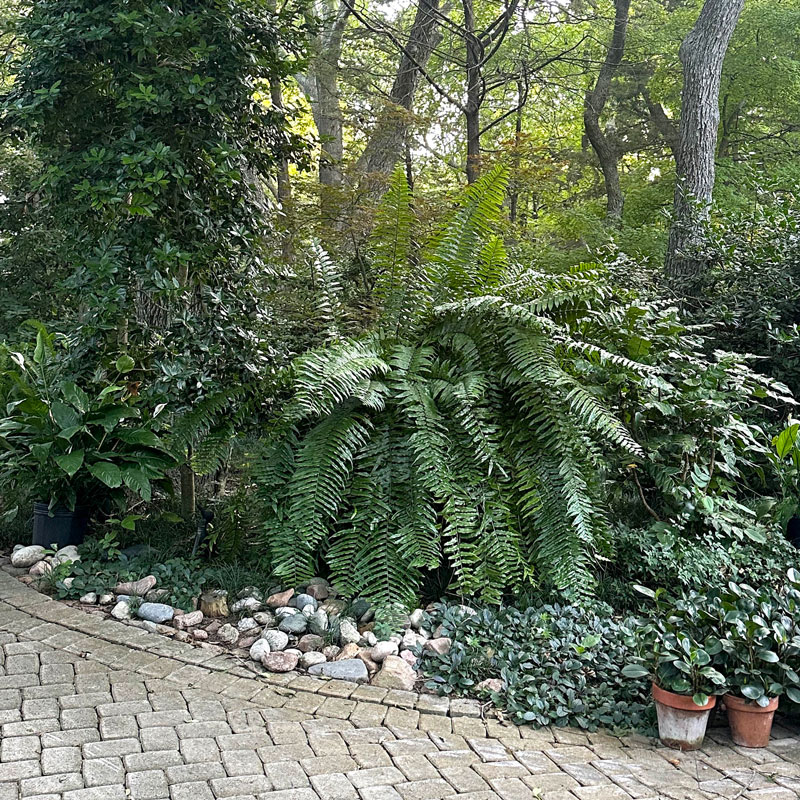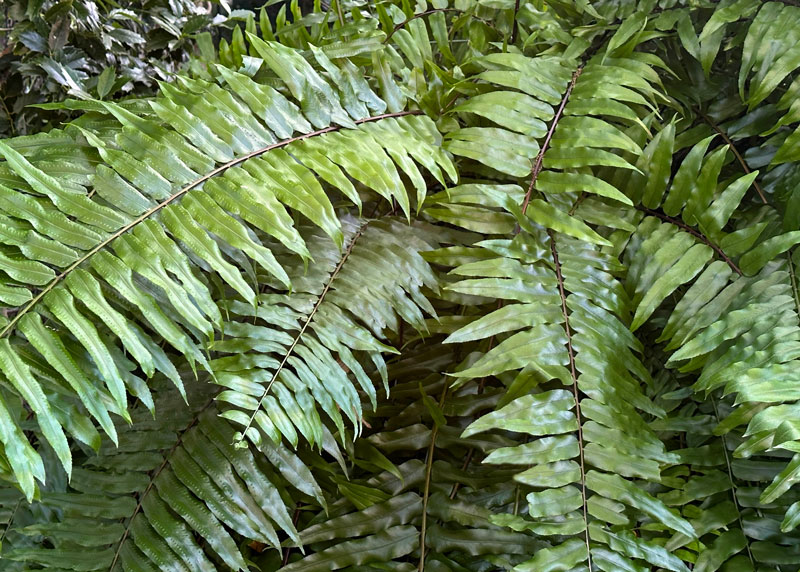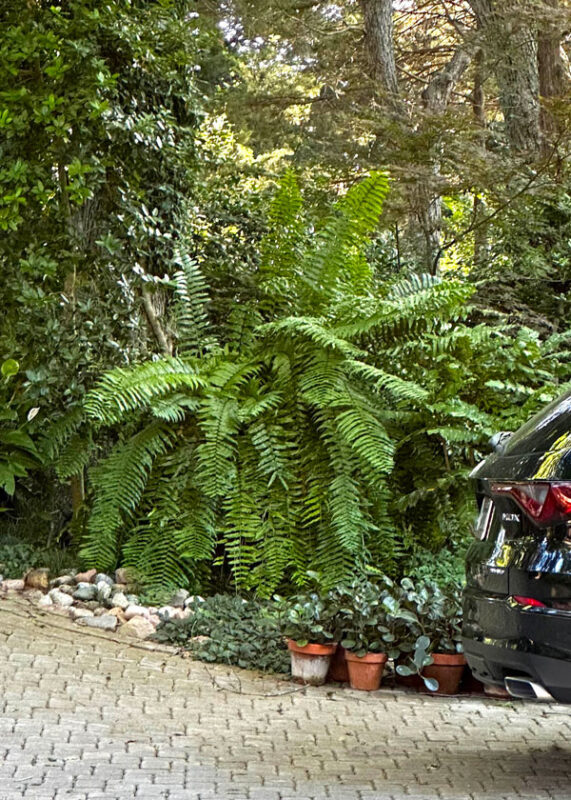Mucho to love with Macho

This plant and I go back 10 or more years. It’s spent those summers right here in this shaded spot in our landscape and winters toasty warm in my greenhouse. Judging from its size and vigor, I’d say it’s happy.

So, I thought I’d share some details of it with you this week. And for that, I thank you. I learned several things.

Macho fern, for example, is not a selection of Boston fern (Nephrolepis exaltata), but a different species (N. biserrata). That species is native to Florida, Louisiana, Mexico, Central America, the Caribbean, huge parts of South America, Africa, and Southeast Asia.
In spite of that, Macho ferns were officially brought into the nursery and greenhouse trades less than 25 years ago.
I spent a couple of hours looking through international websites, both botanical and horticultural. Use the scientific name and you’ll find a lot of information on its distribution. Use the common name and you’ll find a lot of suggestions on its care and uses – like indoors on tabletops. Really? That would be a really big table.
Here’s what you should know…
• Scientific name: Nephrolepsis biserrata.
• Common name: Macho fern, giant sword fern, broad sword fern.

• Size in pots: 4 or 5 ft. tall, 5 or 6 ft. wide.
• Hardiness Zones: 9-11. (Consider it to be tropical. Protect from frosts.)
• Preferred temperature range: 50-90F.
• Lighting requirements outdoors: Shade, no direct sun after 9 a.m.
• Lighting requirements indoors: Bright light such as a sunroom or bright atrium. Leaflets will yellow and drop if kept in dark settings.
• Soil preference: Highly organic, well-draining.
• Moisture preference: Consistently moist, never wet for prolonged periods.
• Methods of propagation: Primarily by division.
• Pest problems: Rare, but scale insects may appear.
